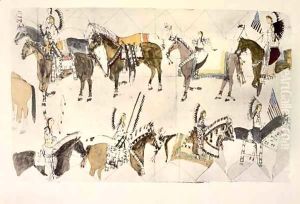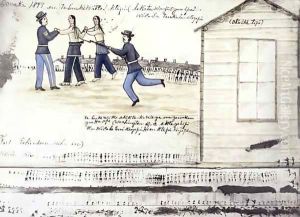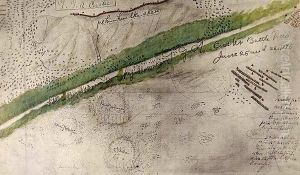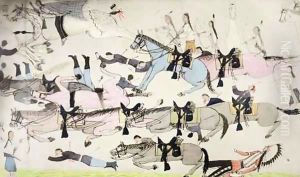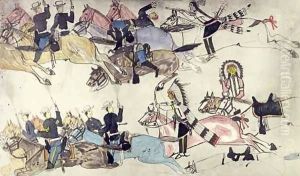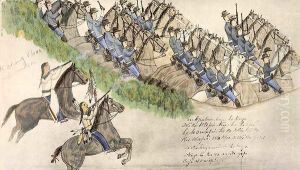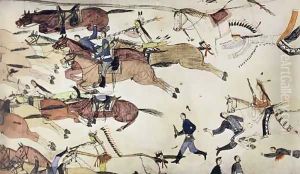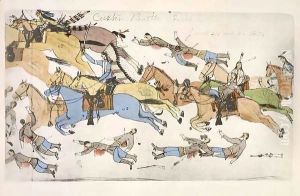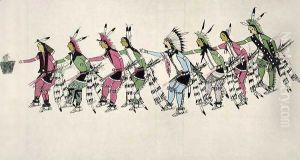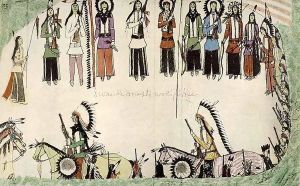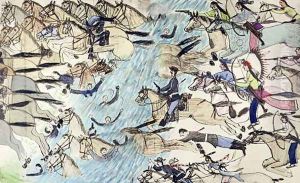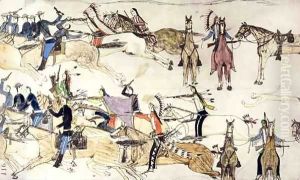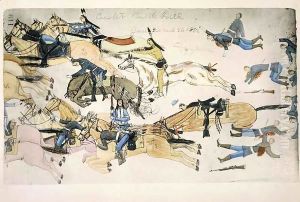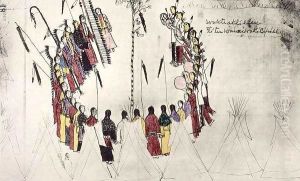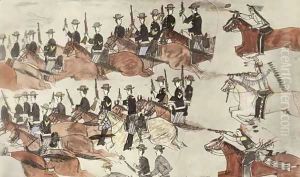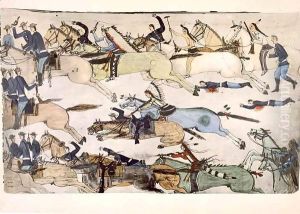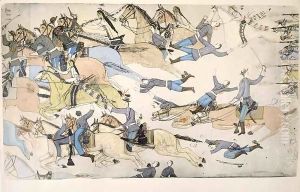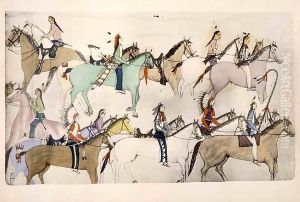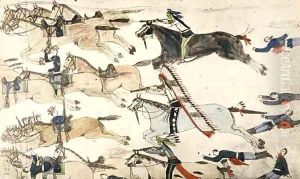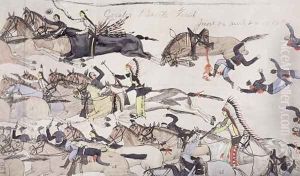Amos Bad Heart Buffalo Paintings
Amos Bad Heart Buffalo, also known as Amos Bad Heart Bull, was a notable Oglala Lakota artist, historian, and a member of the Bad Heart Bull family. He was born in 1869 on the Pine Ridge Reservation in South Dakota, United States, at a time when the Lakota people were undergoing dramatic changes due to the encroachment of European-American settlers and the United States government policies aimed at assimilation.
Amos Bad Heart Buffalo is best known for his ledger art, a form of narrative drawing or painting on paper or cloth that emerged in the Native American artist communities during the late 19th century, especially among the Plains tribes such as the Lakota. This type of art often depicted scenes of daily life, battles, ceremonies, and other aspects of indigenous culture.
During his lifetime, Amos Bad Heart Buffalo witnessed significant historical events, including the Battle of the Little Bighorn in 1876, and the Wounded Knee Massacre in 1890. His works are considered important historical records as they offer insight into Lakota life and perspectives during a period of intense conflict and transition.
He served as a historian through his art, often recording the deeds of Lakota warriors and leaders, as well as scenes of ceremonies and everyday life. His detailed illustrations are valued not only for their artistic quality but also for their cultural and educational significance.
Amos Bad Heart Buffalo's collection of drawings was discovered by his sister, Dolly Pretty Cloud, after his death in 1913. The collection was later published by Helen Blish in a book titled 'A Pictographic History of the Oglala Sioux' in the 1960s, which helped bring his work to a wider audience and solidified his reputation as a significant historical artist. His legacy endures as his artwork continues to be a source of pride and heritage for the Oglala Lakota people and a subject of study for historians and art enthusiasts.
